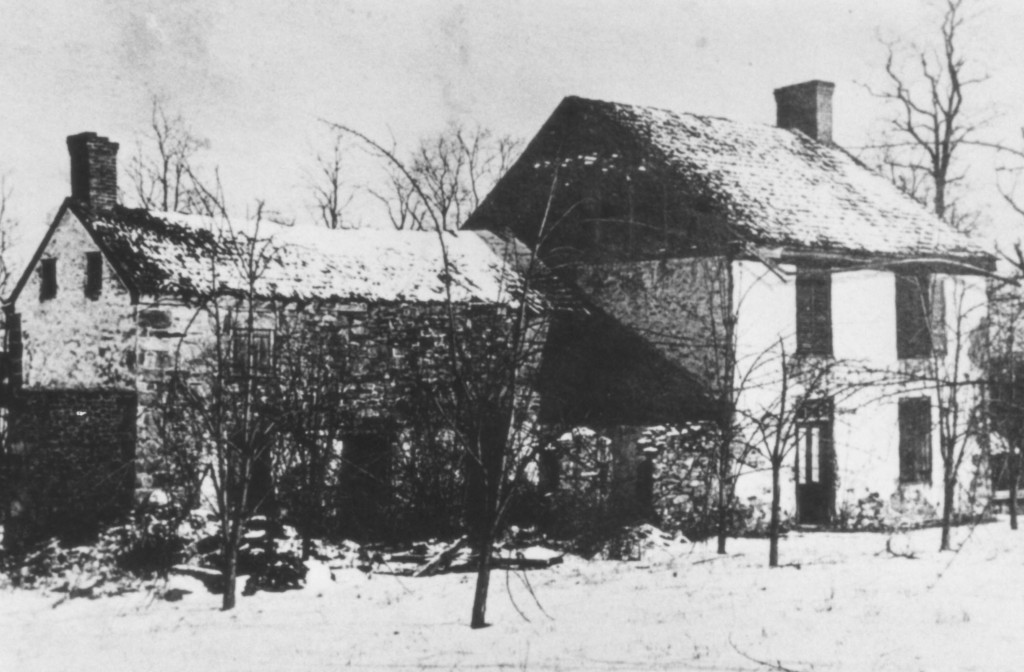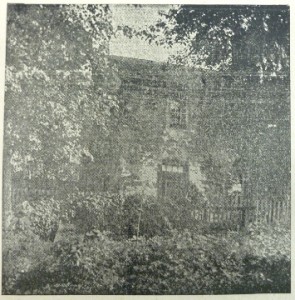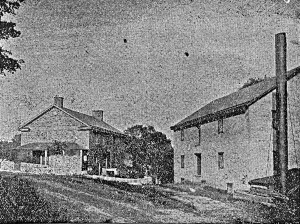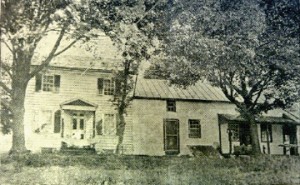Some time ago, I made reference to the map of the Delaware River prepared by Reading Howell. Some people pointed out to me that Howell had made such a map in 1792, but were surprised by the date 1785. I had seen a copy of that map but had been unable to find it in my papers—that is, until today, when I found a very nice copy among the news clippings and other items saved by Edna Laszlo of Raven Rock. I am sorry to say, there was no notation explaining where the original map is kept.
The Revolution
Raven Rock (Saxtonville) & Bull’s Island, continued
John Ladd
John Ladd was one of the Quaker immigrants who came to West New Jersey in 1678. He was also on hand when William Penn was designing the layout of his new town of Philadelphia. Family tradition says that Penn offered him a choice of one of the best squares in the city or £30, and that Ladd chose the money, whereupon Penn said: “John thou art a ladd by name and a lad by nature, doesn’t thee know that Philadelphia will be a great city?” (Ah, Penn—such a joker.)
Washington’s Headquarters, Raritan Township, 1777
by Jonathan M. Hoppock
Democrat-Advertiser, 26 September 1901
The above view of this old mansion now standing on the farm of Manning Dilts in Raritan Township, at the top of what is known as Buchanan’s or Dilley’s Hill, built in 1725, making it one hundred and seventy-six years old, was recently photographed by Mr. J. C. Sunderlin of Flemington.1 From this elevation the eye has a view of the Raritan valley as far east as Bound Brook. Also from this point a view can be had of the Sourland Mountain range from the Delaware on the west, extending through the counties of Hunterdon and Somerset, presenting to the view a greater scope of country than can probably be seen from any other point in the county.
White Hall Recruiting Station, 1775-1781
by Jonathan M. Hoppock
Democrat-Advertiser, 24 October 1901

This old building, erected in 1758 at Head Quarters, now Grover, standing on the corner of the road on the farm at present owned by Smith Skinner, was, between the dates given above, used as a recruiting station.1 As shown by papers in possession of the writer, Captain David Jones, of the Continental line, was the recruiting officer, and at this point, when the alarm was given that the then hated minions of King George had made a landing at Paulus Hook (Jersey City) or Amboy, would assemble the patriotic old citizen-soldiery, armed with the flint-locks, home-made bullets and powder horns, and from thence hasten to the front to assist the great Washington in beating back the invaders.2
Washington’s Headquarters, July 1777
The Magic of Myths
In my last post I wrote about the durable story that George Washington visited with John Opdycke and that, as a result, the village where Opdycke lived took on the name of Headquarters. Some people will read that sentence and conclude that it happened and is not a myth. They will ignore that phrase “durable story.”
Washington Didn’t Sleep in Delaware Twp.
And he probably didn’t visit either. But the notion that he spent a leisurely afternoon drinking fresh water under a shady tree in the company of John Opdycke just won’t go away. It probably never will.
J. M. Hoppock: The Old Opdyke House
Tyson’s Mill at Headquarters
Modified from part of an article first published in The Delaware Township Post, July 21, 2006, as “A History of Headquarters Mill.”
John Opdycke sold Headquarters Mill to Joseph Howell in 1763, at the end of the French and Indian War. This was probably a shrewd decision on Opdycke’s part, since demand for flour would certainly drop off with the end of the war.
Who Saw George Washington?
The question of whether Washington actually visited Headquarters has bedeviled local historians for decades. The source of the controversy was Fanny Carrell, who was interviewed by Charles W. Opdycke, for his well-known Opdyke Genealogy sometime around 1880 [pg 218-19]. Frances ‘Fanny’ Opdycke was the wife of James Carrell, and he was the grandson of Elizabeth Opdycke Arnwine, daughter of old John Opdycke Esq.


